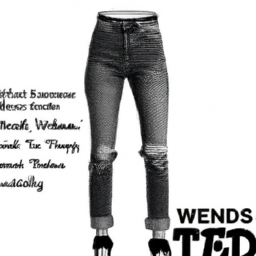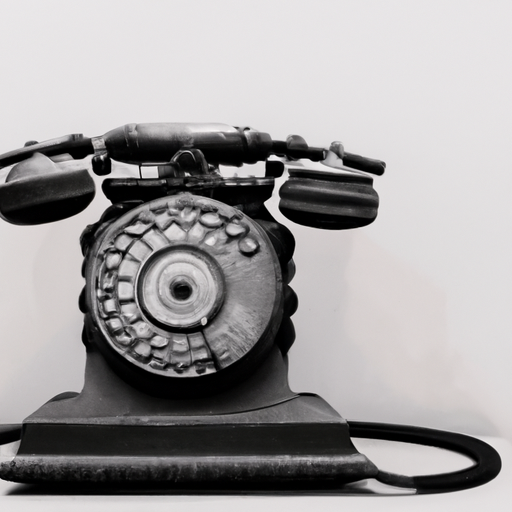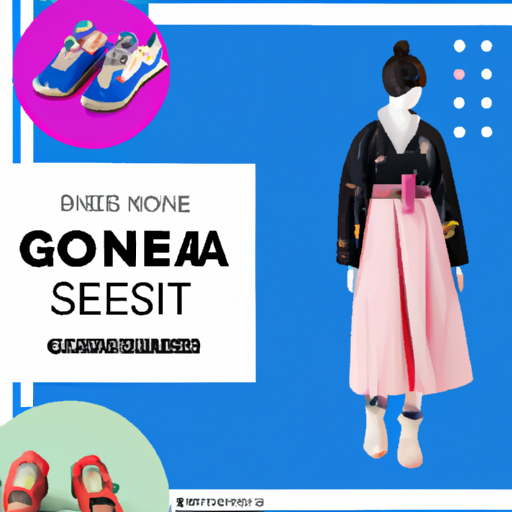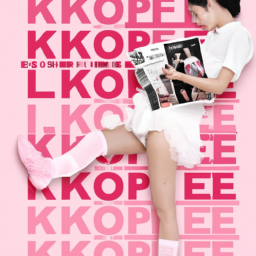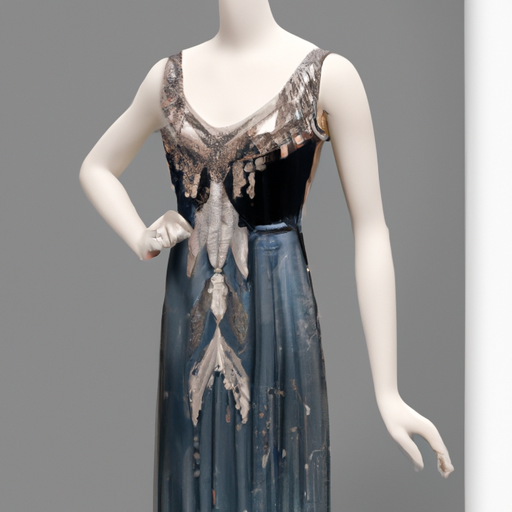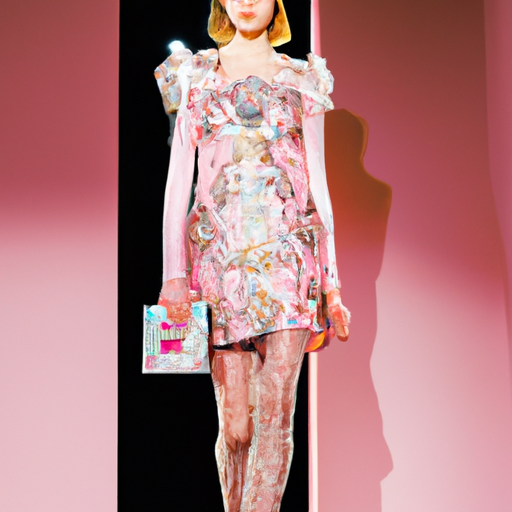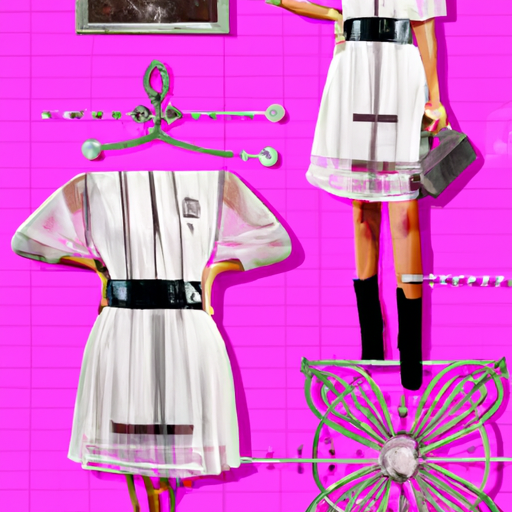2010s Fashion Trends
Alright, let’s talk about the buzzworthy fashion trends that emerged in the 2010s. From high-waisted jeans and crop tops to athleisure and statement sneakers, this decade was all about expressing individuality and embracing comfort. It was a time when normcore collided with streetwear, giving birth to unique styles that reflected the merging of fashion and subculture. With social media platforms rising in popularity, fashion influencers became the go-to source for inspiration, making trends more accessible and inclusive than ever before. So, get ready to take a stylish trip down memory lane as we revisit the iconic fashion moments of the 2010s.
Table of Contents
Athleisure
Introduction to Athleisure
In the world of fashion, athleisure has made a bold entrance and created a new category of clothing that seamlessly combines both athletic and leisurewear. Athleisure is all about fusing comfort and functionality with style, allowing individuals to effortlessly transition from the gym to the streets, or even to social events. This trend has gained immense popularity over the past decade, revolutionizing the way we dress and challenging traditional fashion norms.
Key characteristics of Athleisure
One of the key characteristics of athleisure is the use of performance fabrics that are both breathable and flexible. These materials, such as moisture-wicking nylon or spandex, not only ensure comfort during physical activities but also provide a sleek and modern look. Additionally, athleisure garments often feature minimalistic designs, clean lines, and a neutral color palette, making them versatile and easy to mix and match with other pieces in one’s wardrobe.
Influence of Athleisure on the fashion industry
The impact of athleisure on the fashion industry cannot be overlooked. It has revolutionized the way designers approach clothing, with many high-end fashion houses incorporating athleisure elements into their collections. From sporty dresses to tailored track pants, athleisure-inspired designs have become a staple on runways around the world. This trend has blurred the lines between high fashion and streetwear, appealing to a broader audience and challenging the notion that fashion is solely for formal occasions.
Celebrity endorsements of Athleisure
The rise of athleisure can be attributed in part to the influence of celebrities who have embraced this trend. Renowned figures like Beyoncé, Rihanna, and Gigi Hadid have worn athleisure outfits on numerous occasions, showcasing how these pieces can be effortlessly styled for a chic and fashionable look. Their endorsement has not only helped propel the trend into the mainstream but has also encouraged other individuals to embrace athleisure as a part of their personal style.
Emergence of Athleisure as a dominant trend
Athleisure’s dominance as a fashion trend can be attributed to several factors. Firstly, the increasing focus on health and wellness has made activewear more popular than ever before. People are seeking comfortable and functional clothing that allows them to seamlessly integrate physical activity into their daily lives. Secondly, the rise of social media platforms such as Instagram has contributed to the visibility and accessibility of athleisure, with influencers and fitness enthusiasts sharing their stylish athleisure outfits and inspiring others to embrace this trend. Lastly, the shift in societal norms regarding dress codes has allowed for more versatility in fashion, giving individuals the freedom to express their personal style through athleisure.
Normcore
Overview of Normcore fashion
Normcore is a fashion trend that embraces simplicity, minimalism, and a sense of blending in with the crowd. It is the epitome of anti-fashion, where individuals deliberately choose to dress in plain, unassuming clothing without the desire to stand out. Normcore fashion is characterized by its emphasis on functionality and comfort rather than following trends or seeking attention through elaborate outfits.
Minimalistic approach and comfort of Normcore
At the heart of normcore is a minimalist approach to fashion. The focus is on understated clothing that is effortless, classic, and timeless. Think plain white t-shirts, well-fitting jeans, and sneakers. This simplicity not only allows individuals to blend in with the crowd but also provides a sense of ease and comfort. Normcore fashion rejects the idea of uncomfortable and restrictive clothing in favor of practicality and ease of movement.
Cultural influences on Normcore
The emergence of normcore can be seen as a reaction against the highly stylized, elaborate, and trend-focused fashion that dominated the industry. It takes inspiration from various subcultures like the grunge movement of the 90s or the hip-hop culture of the 80s, where the focus was on individuality and self-expression rather than conforming to fashion norms. Normcore challenges the notion that fashion needs to be attention-seeking or aspirational, instead celebrating the beauty of simplicity and blending in.
Controversies surrounding Normcore
Normcore has certainly sparked debates within the fashion industry. Critics argue that it goes against the very essence of fashion, which has always been associated with individuality and self-expression. They argue that normcore promotes uniformity and sameness, undermining the creativity and diversity that fashion should embrace. However, supporters of normcore argue that it is a deliberate choice to reject the pressure to conform to trends and embrace a more authentic and comfortable style.
Normcore’s impact on high fashion
Although initially seen as an anti-fashion statement, normcore has made its mark in the high fashion world. Luxury brands have embraced the normcore aesthetic and incorporated it into their collections, blurring the lines between high-end and everyday fashion. High fashion designers have created their own interpretations of normcore, elevating simple and basic pieces into coveted items. This fusion of minimalism and luxury has brought normcore into the spotlight and allowed individuals to experience the blend of comfort and style on a whole new level.
Streetwear
Introduction to Streetwear
Streetwear is a fashion trend that originated from the urban communities, particularly in the United States. It draws inspiration from skateboarding, hip-hop, and other subcultures, with a focus on casual and comfortable clothing. Streetwear has gradually evolved from a niche subculture to a dominant fashion trend, influencing both high fashion and popular culture.
Origins and influences of Streetwear
Streetwear has its roots in the 1980s and 1990s, where the emerging hip-hop culture and skateboarding scene heavily influenced fashion. Brands like Stüssy, Supreme, and A Bathing Ape played significant roles in shaping the streetwear movement. The aesthetic was characterized by oversized t-shirts, baggy jeans, hoodies, and sneakers. Streetwear became a form of self-expression for urban youth, representing their cultural identities and rebellious attitudes.
Key features of Streetwear style
Streetwear style is characterized by its casual and relaxed vibe. Comfortable clothing items such as hoodies, sweatpants, and oversized t-shirts are staples in the streetwear wardrobe. Bold graphics, logos, and unique branding are also commonly seen in streetwear designs, allowing individuals to showcase their favorite brands or express their personal style. Additionally, streetwear often incorporates elements from sports and athletic wear, adding a touch of functionality to the fashion aesthetic.
Streetwear’s influence on luxury brands
Streetwear’s influence on luxury brands cannot be understated. Recognizing the rising demand for streetwear-inspired fashion, many high-end designers have collaborated with streetwear brands or incorporated streetwear elements into their collections. This collaboration between high fashion and streetwear has resulted in unique and highly sought-after pieces, combining the exclusivity of luxury fashion with the casual coolness of streetwear.
Streetwear’s presence in popular culture
One of the defining characteristics of streetwear is its strong presence in popular culture. It has become the go-to fashion choice for many celebrities, athletes, and influencers, who regularly showcase their streetwear outfits on social media platforms. Streetwear has also permeated music and entertainment, with artists often seen wearing streetwear brands in music videos and performances. Its influence can be seen in the rise of sneaker culture, as well as the incorporation of streetwear aesthetics in mainstream fashion magazines and editorials.
Retro Revival
Popular fashion eras revisited in the 2010s
In the 2010s, fashion saw a resurgence of interest in vintage styles, with many designers and individuals embracing the looks of past decades. Iconic eras such as the 70s, 80s, and 90s became significant sources of inspiration, resulting in a wave of retro revival. This trend allowed individuals to celebrate the nostalgia of previous decades while adding a contemporary twist to their outfits.
Influence of nostalgia in fashion trends
Nostalgia played a crucial role in driving the retro revival trend. As individuals sought familiarity and a connection to the past, fashion became a vehicle for expressing nostalgia. The re-emergence of vintage styles allowed people to relive or rediscover the iconic fashion of eras gone by. From bell-bottom jeans and psychedelic prints of the 70s to neon colors and oversized silhouettes of the 80s, each era brought unique fashion elements that captivated individuals in the 2010s.
Revival of iconic fashion pieces and styles
The retro revival trend brought back a multitude of iconic fashion pieces and styles. Flared jeans, platform shoes, and peasant blouses reminiscent of the 70s made a comeback. Neon colors, shoulder pads, and bold prints defined the 80s-inspired looks. And the 90s, with its grunge aesthetic and minimalist approach, brought back slip dresses, oversized denim jackets, and chokers. These revived fashion pieces added a nostalgic touch to modern wardrobes, creating a fusion of old and new.
Celebrity icons and their retro-inspired looks
Many celebrities embraced the retro revival trend, showcasing their love for vintage and nostalgia. Style icons like Rihanna, Zendaya, and Harry Styles were known for their eclectic mix of retro-inspired looks, adding their own unique twist to iconic fashion elements. Whether it was Harry Styles’ flamboyant and colorful suits reminiscent of the 70s or Rihanna’s bold 90s street style, these celebrities became influential figures in shaping and popularizing the retro revival trend.
Impact of social media on the resurgence of retro fashion
The rise of social media platforms such as Instagram played a significant role in the resurgence of retro fashion. Fashion influencers and bloggers capitalized on the retro revival trend by sharing their vintage-inspired outfits, styling tips, and thrifting finds with their followers. Social media provided a platform for individuals to connect, share, and be inspired by each other’s nostalgic fashion choices. As a result, the retro revival trend gained momentum, turning vintage fashion into a global phenomenon.
Gender-Fluid Fashion
Rise of gender-neutral clothing
In recent years, there has been a growing movement towards gender-neutral clothing and a rejection of traditional gender norms in fashion. Gender-fluid fashion is all about breaking down the barriers of gender and embracing clothing that can be worn by individuals of any gender. This trend has allowed for greater inclusivity and creativity in the fashion industry, challenging the binary definitions of men’s and women’s clothing.
Designers breaking gender norms in fashion
Designers have played a pivotal role in pushing the boundaries of gender norms in fashion. Brands such as Gucci, Balenciaga, and Vetements have showcased gender-fluid collections on the runway, featuring models of various gender identities dressed in diverse and inclusive clothing. These designers have introduced garments that blur the lines between traditionally masculine and feminine styles, creating a more inclusive and diverse fashion landscape.
Inclusivity and diversity in the fashion industry
Gender-fluid fashion has brought much-needed inclusivity and diversity to the fashion industry. It has allowed individuals to express their personal style without being confined to societal gender expectations. By embracing gender-neutral clothing, fashion has become a medium for self-expression and a platform for challenging traditional gender norms. This movement has opened doors for individuals of all genders to feel seen, represented, and celebrated in the fashion world.
Popularity of unisex clothing lines
The rise in popularity of unisex clothing lines is a reflection of the growing demand for gender-neutral fashion. Many brands have noticed this shift in consumer preference and have started incorporating unisex collections into their offerings. These collections typically feature versatile garments that are not limited to a specific gender, allowing individuals to mix and match pieces to create their desired look. This inclusive approach to fashion has empowered individuals to express their personal style while defying gender expectations.
Celebrity influencers promoting gender-fluid fashion
Celebrity influencers have played a significant role in promoting and normalizing gender-fluid fashion. Public figures like Jaden Smith and Billy Porter have become renowned for their gender-bending fashion choices, challenging traditional norms and inspiring others to embrace their true selves. By utilizing their platforms, these celebrities have sparked conversations and brought greater visibility to the importance of gender inclusivity in fashion.
Sustainable Fashion
Growing awareness of environmental impact in fashion
In recent years, there has been a growing awareness of the negative environmental impact of the fashion industry. From water pollution to excessive waste and carbon emissions, the fashion industry has been criticized for its unsustainable practices. This heightened awareness has led to a surge in demand for sustainable fashion, as individuals seek alternatives that prioritize ethical production methods and environmentally friendly materials.
Emergence of eco-friendly fabrics and materials
The emergence of eco-friendly fabrics and materials has played a crucial role in sustainable fashion. Designers and brands are now using innovative materials such as organic cotton, bamboo, and recycled polyester to reduce their ecological footprint. These materials offer a more sustainable alternative to traditional fabrics, as they require fewer natural resources and release fewer harmful chemicals during production. Additionally, sustainable fashion has embraced the use of natural dyes and non-toxic processes, further minimizing harm to the environment.
Ethical and sustainable fashion movements
Numerous ethical and sustainable fashion movements have emerged in response to the negative environmental and labor practices of the industry. Movements such as slow fashion, fair trade, and circular fashion advocate for a more conscious and responsible approach to clothing production. They emphasize the importance of supporting ethical working conditions, fair wages, and transparency throughout the supply chain. These movements aim to create a more sustainable and equitable fashion industry that prioritizes both social and environmental welfare.
Prominent sustainable fashion brands
The rise of sustainable fashion has seen the emergence of numerous brands committed to ethical production and sustainable practices. Brands like Patagonia, Eileen Fisher, and Stella McCartney have become renowned for their commitment to sustainability and their efforts to minimize their environmental impact. These brands focus on creating timeless, high-quality garments that are made to last, reducing the need for excessive consumption and waste.
Celebrities endorsing sustainability in fashion
Celebrities have played a significant role in promoting and endorsing sustainable fashion. High-profile figures like Emma Watson, Leonardo DiCaprio, and Livia Firth have used their platforms to raise awareness about the environmental impact of the fashion industry and advocate for sustainable alternatives. By wearing sustainable brands on the red carpet and speaking out about the importance of ethical fashion, these celebrities have encouraged their fans and followers to make more conscious fashion choices.
Monochrome Madness
Trend towards monochromatic outfits
Monochrome madness has taken the fashion world by storm, with individuals embracing the simplicity and sophistication of monochromatic outfits. Monochrome outfits consist of a single color or shades of the same color, creating a cohesive and impactful look. This trend allows individuals to experiment with different hues and tones while maintaining a sleek and polished appearance.
Impact of minimalism in 2010s fashion
The trend towards monochrome outfits can be attributed in part to the rise of minimalism in fashion during the 2010s. Minimalism focuses on simplicity, clean lines, and a pared-down aesthetic, favoring quality over quantity. Monochrome outfits align perfectly with this minimalist approach, as they eliminate excessive color or pattern distractions and allow the focus to remain on the silhouette and design of the garments.
Creative styling with black and white
Black and white are the most popular colors when it comes to monochromatic outfits. These classic colors provide a timeless and elegant base that can be easily dressed up or down. Individuals have embraced creative styling techniques such as color blocking, layering different shades, or incorporating texture and pattern to add depth and visual interest to their black and white ensembles. This versatility allows individuals to adapt the monochrome trend to their personal style and make a statement without relying on bold color choices.
Monochrome on the runway and red carpet
Monochrome outfits have not only become popular on the streets but have also made their way onto the runways and red carpets. Many designers have showcased monochromatic collections, emphasizing the power and simplicity of a single color. Celebrities have embraced the monochrome trend on the red carpet, opting for elegant and chic black or white ensembles that make a strong fashion statement. Monochrome outfits have proven to be a timeless choice that transcends trends and allows individuals to exude confidence and sophistication.
Influence of street style on monochromatic fashion
Street style has played a significant role in popularizing monochrome fashion. Fashion influencers and street style photographers have captured individuals dressed in head-to-toe monochrome looks, showcasing the versatility and impact of this trend. Street style has become an integral part of fashion culture, with individuals looking to everyday fashionistas for inspiration and trends. Social media platforms have allowed these monochrome street style looks to reach a global audience, making monochrome fashion a pervasive trend that continues to captivate fashion enthusiasts worldwide.
Bold Prints and Patterns
Popularity of vibrant and eye-catching prints
Bold prints and patterns have become a fashion statement in their own right, with individuals embracing vibrant and eye-catching designs. From abstract geometrics to tropical florals, these prints allow individuals to express their personality and make a bold fashion statement. This trend has brought a new dimension to fashion, injecting excitement and playfulness into outfits.
Animal and floral prints in fashion
One of the most popular categories of bold prints is animal and floral prints. These designs have stood the test of time and continue to be reinvented each season. Animal prints, such as leopard and snake patterns, add a touch of fierceness and glamour to any outfit. Floral prints, on the other hand, bring a sense of femininity and whimsy. Whether it’s a leopard print coat or a floral maxi dress, these bold prints have become wardrobe staples for those looking to make a statement.
Mixing and clashing patterns
The trend of mixing and clashing patterns has gained popularity, allowing individuals to showcase their creativity and fashion-forward thinking. Combining different prints, such as stripes with polka dots or florals with checks, adds visual interest and creates a unique and personalized look. This trend embraces the idea that fashion should be fun and experimental, encouraging individuals to step out of their comfort zones and challenge traditional styling rules.
Prints and patterns in high-end fashion
Bold prints and patterns have made their mark in high-end fashion, with many luxury brands incorporating them into their collections. Designers like Dolce & Gabbana, Versace, and Gucci have showcased intricate and elaborate prints on their runway shows, elevating bold patterns to a new level of sophistication. This fusion of high-quality craftsmanship and vibrant designs has redefined how prints and patterns are perceived in the fashion industry.
Prints in the celebrity fashion scene
Celebrities have fully embraced the trend of bold prints and patterns, often seen wearing attention-grabbing designs on red carpets and public appearances. From bold striped suits to colorful floral gowns, celebrities like Zendaya, Blake Lively, and Jared Leto continue to push the boundaries of fashion with their fearless print choices. Their influence has encouraged individuals to step outside their comfort zones and experiment with eye-catching prints in their own wardrobes.
Logo Mania
Rise of logo-centric fashion
The rise of logo-centric fashion has seen brands capitalize on the allure of their recognizable logos and monograms. Logos have become an integral part of fashion, serving as a form of status symbol and brand identification. From luxury brands like Louis Vuitton and Chanel to streetwear giants like Supreme and Off-White, logos have taken center stage, becoming the focal point of many garments and accessories.
Luxury brands’ use of logos
Luxury brands have long embraced logo-centric fashion, using their logos as a signifier of quality and exclusivity. Iconic logos such as Gucci’s double G, Louis Vuitton’s LV, or Chanel’s intertwined C’s have become synonymous with luxury and have a cult-like following. These logos adorn a wide range of products, from handbags and clothing to shoes and accessories, allowing individuals to proudly display their brand allegiance.
Streetwear brands’ logo obsession
Streetwear brands, known for their bold and edgy designs, have taken logo-centric fashion to a whole new level. Brands like Supreme, Off-White, and Vetements have created an obsession with logos, incorporating them into their designs in innovative and attention-grabbing ways. Logos are often prominently displayed, oversized, or repetitively patterned, making a bold statement and becoming instantly recognizable to fashion enthusiasts.
Controversies surrounding logo mania
Logo mania has not been without its controversies. Critics argue that logo-centric fashion promotes brand worship and consumption culture, creating an environment where individuals prioritize the label over the actual design or quality of the garment. Additionally, the excess and overexposure of logos can be seen as tacky or ostentatious, leading some individuals to reject this trend in favor of more understated and minimalist fashion choices.
Logo fashion’s influence on accessories and footwear
Logo-centric fashion has undoubtedly influenced the accessories and footwear industry. Logos are prominently displayed on handbags, belts, and shoes, becoming a recognizable and coveted element of these accessories. From the iconic Louis Vuitton monogram on a handbag to the Nike swoosh on a pair of sneakers, logos have become a way for individuals to make a fashion statement and showcase their brand loyalty.
High-Low Fashion
Combination of luxury and affordable fashion
High-low fashion is all about combining luxury and affordable fashion pieces to create a well-curated and dynamic outfit. This trend allows individuals to mix high-end designer pieces with more accessible and affordable items, creating a unique and elevated look without breaking the bank. High-low fashion embraces the idea that style is not exclusively dictated by price tags but rather by creativity and individuality.
Designer collaborations with high street brands
One of the driving forces behind high-low fashion is the collaboration between high-end designers and high street brands. These collaborations allow individuals to experience the aesthetic and quality of luxury fashion at a more affordable price point. Designers like Karl Lagerfeld, Alexander Wang, and Versace have joined forces with brands like H&M and Target, creating collections that offer a taste of high-end fashion to a broader audience.
Impact of fast fashion on high-end fashion
The rise of fast fashion has also contributed to the popularity of high-low fashion. Fast fashion brands like Zara, ASOS, and Forever 21 often produce clothing that takes inspiration from high-end designer collections at a fraction of the price. This allows individuals to emulate the latest trends seen on runways without the hefty price tag, creating a culture where fashion accessibility is emphasized over exclusivity.
Social media driving the high-low trend
Social media platforms have played a significant role in driving the high-low fashion trend. Fashion influencers and bloggers regularly showcase their high-low outfits on Instagram and other platforms, demonstrating how luxury and affordable fashion can be seamlessly combined to create a stylish and on-trend look. Social media has democratized fashion, allowing individuals to discover and experiment with high-low fashion, regardless of budget or location.
Celebrity endorsements of high-low fashion
Celebrities and style icons have played a significant role in popularizing high-low fashion. They often mix high-end designer pieces with more affordable fashion finds, proving that style is not limited to the cost of clothing. Celebrities like Blake Lively, Olivia Palermo, and Zendaya have showcased their high-low fashion choices on numerous occasions, inspiring individuals to be creative and daring with their outfit combinations. Through their endorsement, high-low fashion has become a symbol of style and resourcefulness in the fashion world.
In summary, the 2010s witnessed a multitude of fashion trends that revolutionized the industry and challenged traditional norms. From the rise of athleisure, normcore, and streetwear to the embrace of retro revival, gender-fluid fashion, and sustainable practices, these trends have transformed the way we dress and express ourselves. Bold prints and patterns, logo mania, monochrome madness, and high-low fashion have further added excitement and variety to our wardrobes. As fashion continues to evolve, it is fascinating to observe how these trends reflect cultural shifts, technological advancements, and the ever-changing desires of individuals seeking to redefine their personal style.
